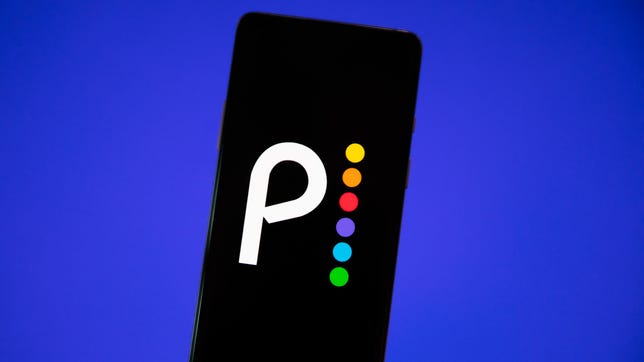Technologies
Peacock Review: Free TV May Hook You, But You’ll Need a Paid Plan to See Everything
Hours of ad-supported free content is available to stream, but a paid account may not be worth it to watch live sports or Yellowstone.
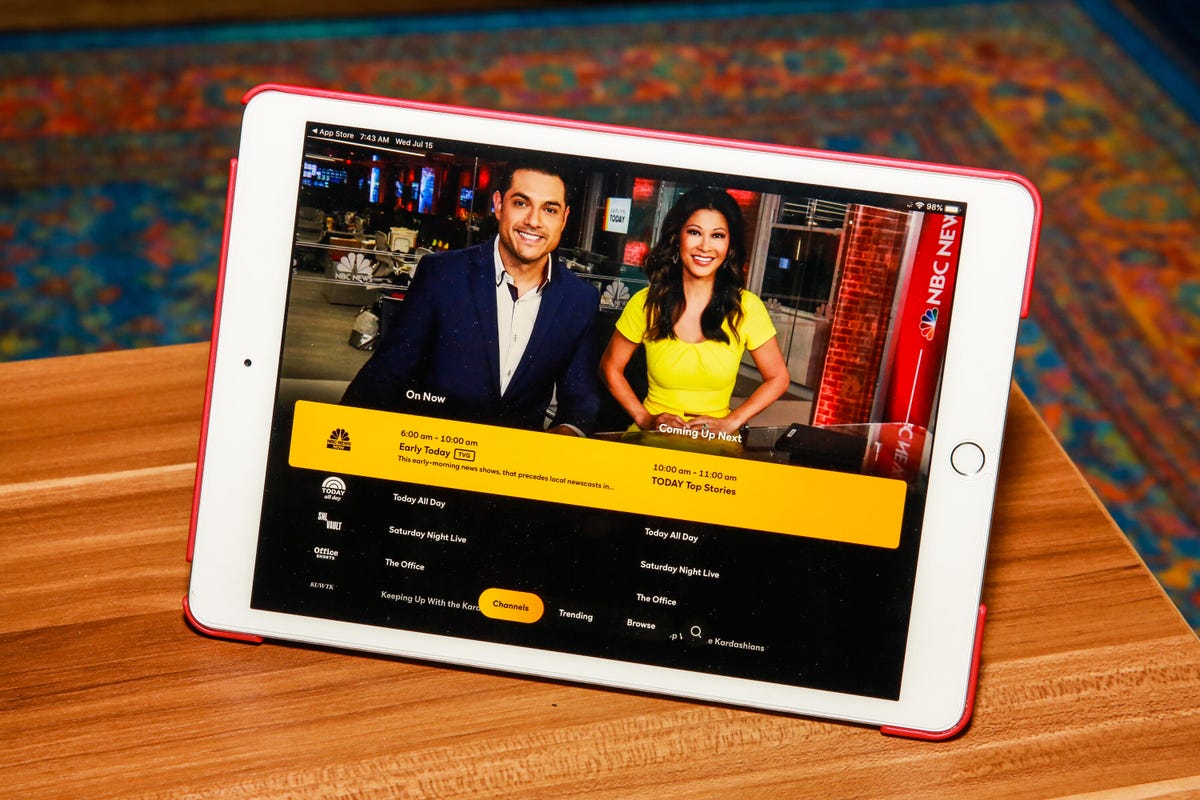
Since its launch in July 2020, Peacock, NBCUniversal’s streaming service, has seen a bump in growth. After adding new episodes of NBC shows, Hallmark content and Days of Our Lives to the streaming platform, it’s leveling up its new and original content offerings. Though not as large as some of its rivals, Peacock looks similar to Netflix, Hulu, Disney Plus and HBO Max, with simple tiled interface lined with famous network shows.
But unlike those other services, Peacock has a version that’s completely free to watch with ads. In that respect it’s similar to free streaming services such as Pluto TV, Tubi and Roku Channels, but with a better selection. Peacock’s free tier offers about 40,000 hours of ad-supported content. You’ll find shows, movies, news, live sports and skit-style clips, with standouts including The Office, Parks and Recreation, Modern Family and 30 Rock.
Like
- Strong free version
- Large back catalog of shows and movies
- Live news and next-day access to some NBC shows
- Live sports like WWE and the Olympics
Don’t Like
- Full access to major shows, originals and live sports isn’t free
- Few original series or newer movies
- Missing features like mobile downloads for all tiers and 4K HDR
The catch? Many marquee series only include the first two seasons with the free tier — you’ll need to upgrade to Peacock Premium at $5 a month to binge it all. Popular shows like Bel-Air and Yellowstone also only offer one episode on the free tier, with the rest behind the Premium paywall. And some shows, like Parks and Recreation and The Office, are only available as complete series on Premium.
Peacock’s live sports offering is a strength, although most live events require a Premium subscription. It has NFL Sunday Night Football, the US Open, MLB on Sunday mornings, WWE wrestling, Premier League and more.
If you upgrade to the Premium tier ($5 a month or $50 a year, with ads) or the Premium Plus tier ($10 a month or $100 a year), you’ll get access to the full catalog of 80,000 hours of content. Series include the Quantum Leap reboot, Vampire Academy, Real Housewives and Chicago Fire. You’ll also get next-day access to new episodes of all current NBC shows and even early access to Late Night with Seth Meyers and The Tonight Show Starring Jimmy Fallon the night they air.
The free version of Peacock is worth exploring, but whether you’re willing to pay $5 to $10 a month when you already have the other major streaming services will depend on how much you want to watch favorites like The Office, Days of Our Lives, Yellowstone and live sports.
Read more: Peacock free or Premium? Ads or no ads? Here’s how to pick the right streaming plan
How many ads does Peacock have?
I tested out Peacock’s ad-supported free tier and its ad-supported $5-a-month Premium tier. (You don’t need a credit card to sign up for the free account, just an email address, which is nice.) Peacock promises that you’ll see five minutes or less of ads per hour across both ad-supported tiers.
My experience varied depending on the show and device. While watching The Hitman’s Bodyguard on a Roku TV, there were six ads sprinkled throughout the film, ranging from 20 to 60 seconds each. Peacock even marks midroll ad breaks so you know when to expect them. But when it played on the iPhone app, there was a notice that we would watch 135 seconds of ads at the beginning, and none for the rest. That option would be great to have on the Apple TV too to get the ads out of the way, but unfortunately it’s not (yet).
After scrolling around and watching a bunch of ads, when I went back to start The Hitman’s Bodyguard again, there were no ads at all, because I had already seen 5 minutes’ worth in the previous hour. It does seem like if you pop in and out of a movie or show, the ad count may reset. When I streamed the movie Nope, there was only a 2.5-minute set of ads before the movie, with no commercials during the film. And The Godfather’s three-hour runtime didn’t have any ad interruptions.
On episodes of Saturday Night Live, there were seven to nine ads sprinkled throughout the episode on both mobile and TV. Modern Family had three to four ad breaks within one 23-minute episode. This is about the same ad experience as watching on Hulu’s $8-a-month ad-supported plan, or on regular live TV — except it’s free.
It’s also worth mentioning that some subscribers to the most-expensive, ad-free, paid version will still see ads on «a small amount of programming, Peacock channels, live events and a few TV shows and movies,» according to Peacock.
Familiar navigation (for the most part)
Peacock’s homepage and Browse section is similar to those of other streaming services. There’s a big carousel of «hero» tiles at the top and rows of thumbnails below, labeled Peacock Picks, Continue Watching, Peacock Originals, Featured Films and so on. For Pride Month, there’s also some carousels highlighting LGBTQ movies and TV shows including Modern Family and Queer as Folk. Peacock now offers some 4K content, which is labeled separately from the rest of the catalog, making it easy to find. You can also seamlessly search for specific titles, but if you type in «originals,» it won’t spit out a list of Peacock Originals.
Peacock does have a Kids page with a couple of shows like Barney and Curious George on its free tier, but its most popular shows, including Dreamworks’ Dragons: Riders of Berk and The Croods: Family Tree, are only available with a paid subscription. Parents do have the option of setting a PIN-enabled parental lock to limit the age range of content displayed, but there’s unfortunately no option to filter out Premium content, which may leave kids frustrated at how many shows are unavailable to them.
Premium shows are mixed in with free offerings, denoted by a little purple feather in the top left corner. It reminds me a bit of Amazon Prime Video, which has shows included in your subscription mixed in with those you have to pay extra for. The app isn’t forceful in trying to get you to upgrade, though: You’ll only be asked if you want to change to premium if you click on a premium-only show, or if you go to your Account page. You can stream on up to three devices simultaneously from one account.
Browsing deep into NBC’s back catalog
One of Peacock’s biggest advantages is its access to NBC’s strong catalog of content, as well as its sister networks and entertainment properties, including Bravo, USA Network, Syfy, Oxygen, E!, CNBC, MSNBC and Universal Pictures. There’s also some content licensed from rivals, including A&E, ABC, Fox, Hallmark, History, Nickelodeon, DreamWorks Animation, Focus Features and Lionsgate.
Some of the best shows available on the free tier now are Saturday Night Live, 30 Rock, and Downton Abbey, and you get all seasons of each (with the exception of 30 Rock, which is missing one season). Upgrade to premium to get the complete run of older shows including Cheers, Frasier, House and Two and a Half Men. For some shows, however, you get only a recent handful of seasons or episodes, even on premium. For example, you’ll only find the first season of Chucky.
The catalog is far from complete, however. Some shows you might associate with NBC, like Friends, Seinfeld and Scrubs aren’t on Peacock, and don’t seem to be coming any time soon. So far, the most successful Peacock originals have been the Fresh Prince prequel drama, Bel-Air, The Best Man: The Final Chapters and Bravo reality shows including The Real Housewives of Miami and The Real Housewives: Ultimate Girls Trip. None have garnered quite the same buzz as other streaming platforms’ originals, such as Obi-Wan Kenobi on Disney Plus or HBO Max exclusive Peacemaker.
In the Movies category, you’ll find hundreds of titles, organized by genre, franchise, or what’s new in theaters. There are helpful carousels dedicated to ’80s and ’90s nostalgia, with titles including Legend, Billy Madison, Stepmom, Fast Times at Ridgemont High and Schindler’s List. And there are Peacock Originals such as Psych 3: This Is Gus.
However, Peacock’s big-name movies don’t always stick around for long. Jurassic World Dominion and Minions: The Rise of Gru are set to leave Peacock in January 2023, for example. Others that have come and gone include the Harry Potter movies, Do the Right Thing and Phantom Thread. But, you can check Peacock to see when a given title is leaving a platform.
Peacock helpfully displays Rotten Tomatoes ratings, both showing the critics’ score and the audience score. Movie thumbnails may include a red-tomato, «fresh» rating but don’t display a score if the movie is rated «rotten.» You can see the score for any movie with a Rotten Tomatoes rating, alongside the audience score, after selecting it. The platform has boasted some immediate streaming rights for theatrical releases, including Jennifer Lopez’s Marry Me, Halloween Kills and 2022’s Firestarter. In October 2022, Halloween Ends had a same-day premiere on Peacock.
‘Channels’ mixes live TV and on-demand
From Browse, you can navigate to the Channels section of the app, which is another hodgepodge of free content. Channels looks kind of like a cable box grid guide, but instead of various networks and cable channels, you get themed channels around Peacock’s programming. These include NBC News Now, Best of WWE, Dateline 24/7, True Crime, and Today: All Day. In addition to more recent programming, some channels focus on older content, from Fallon Tonight, which shows old episodes of The Tonight Show, to SNL Vault, Classic TV, and the Bob Ross Channel. There is also Spanish-language content from Telemundo.
The biggest appeal to Channels for many will likely be its live sports and news programs, which offer a decent selection of live NBC programming without the need for a subscription. These include NBC News Now, Sky News, NBC channels for major cities like New York and Los Angeles, and NBC Sports. You’ll also find NBC’s new 24-hour version of the Today Show, called Today All Day, though that includes repackaged Today segments and more lifestyle programming than straight news. However, unlike live TV streaming platforms such as YouTube TV or Hulu With Live TV, there’s no option to record programming to a DVR.
Still MIA: Mobile downloads for all
While there’s not too much to complain about in the free tier, the premium offerings still lack consistent features that competitors like Netflix and Hulu already have. Mobile downloads are still limited to Premium Plus subscribers, the service’s most expensive tier.
Should you get Peacock?
It’s free, so why not try it out? If the ads bug you or you want to watch one of the original shows, you can try out its premium tiers free for seven days as well, or find other deals depending on your platform and cable provider; some cable customers can get it for free.
Will Peacock make it onto your daily streaming routine, alongside Netflix and Hulu? Probably not, at least in the short-term. But is it a great free option for finding some older movies and shows you might have missed (or want to watch for the millionth time)? Definitely. If you don’t mind watching a few ads, it’s a fun place to explore older movies and a big mix of TV shows, and keep up with current NBC shows, reality TV, news and some live sports in one spot — especially if you’re already a cord-cutter and looking to expand your options for free.
Technologies
What a Ban Would Actually Mean for DJI Drone Owners and Holiday Shoppers
What’s the secret to a very un-merry shopping season? A brand new, unusable drone.
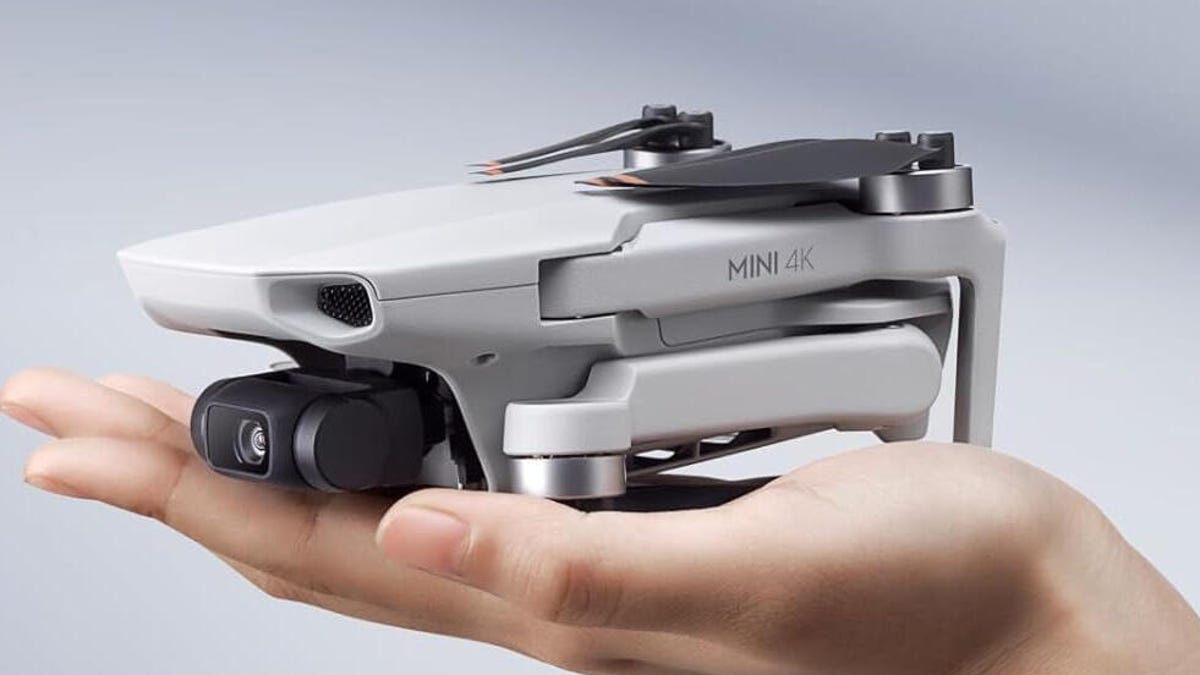
With Thanksgiving wrapped up and the Black Friday shopping sales here, if a DJI drone is on your holiday wish list, you might want to hit «buy» immediately. The company has issued a stark warning: Its drones could be banned from sale in the US, and the deadline is looming.
The Federal Communications Commission voted 3-0 at the end of October to «close loopholes» that allow tech deemed a «national security risk» to be sold in the US. In plain English, the US government is clearing the path to give DJI the same treatment it gave Chinese phone-maker Huawei, effectively banning its products from the American market.
The US government has deemed DJI, which is based in China, a security risk. It’s also considering a separate ban on TP-Link routers.
DJI is already sounding the alarm, posting on Instagram that a «deadline that could decide DJI’s fate in the US is just 43 days away» (now 19 days away). The company is warning that without an audit, its products could face an «automatic ban.» The US government has long labeled the Chinese drone maker a security risk, and it looks like the hammer might finally be coming down right before the holidays.
Don’t miss any of our unbiased tech content and lab-based reviews. Add CNET as a preferred Google source.
The vote isn’t the end of the road, however. Future bans would need to target specific products and would require a period of public consultation. But it appears the groundwork is being set for the FCC to block sales of future and some existing DJI drones from US shores, as well as products that use DJI technology.
The government has called for a DJI audit by the end of the year, but if that doesn’t happen, DJI drone products could be banned for sale by default under a national security law.
DJI asks for a security audit before any ban
A representative for DJI told CNET that while the FCC vote references a rule change that doesn’t currently apply to DJI specifically, the National Defense Authorization Act deadline in December would put Chinese companies like it on the FCC’s ban list, «without any evidence of wrongdoing or the right to appeal.»
Adam Welsh, head of global policy at DJI, said the company has repeatedly said it would be open to audit, but that «more than 10 months have now passed with no sign that the process has begun.»
«The US government has every right to strengthen national security measures, but this must go hand in hand with due process, fairness, and transparency,» Welsh said.
Welsh said DJI is urging the government to start the audit process or grant an extension.
Will DJI drone owners need to give them up?
Because the ban would apply to new sales, not drones that have already been sold, a DJI drone you already own would still be legal to use — at least under current rules.
Government agencies, however, are prohibited from purchasing or using drones from Chinese companies, including DJI.
DJI’s drones consistently rank high in their product category. In January, they dominated CNET’s list of best drones for 2025. But some of the company’s newest products, such as the DJI Mavic 4 Pro, haven’t been available for sale in the United States.
Even DJI products that are not yet banned may be hard to find. The website UAV Coach has posted a guide to the bans and reports that, due to inventory issues, most DJI drone models are sold out at retailers regardless of future FCC action.
Technologies
Today’s NYT Strands Hints, Answers and Help for Nov. 29 #636
Here are hints and answers for the NYT Strands puzzle for Nov. 29, No. 636.
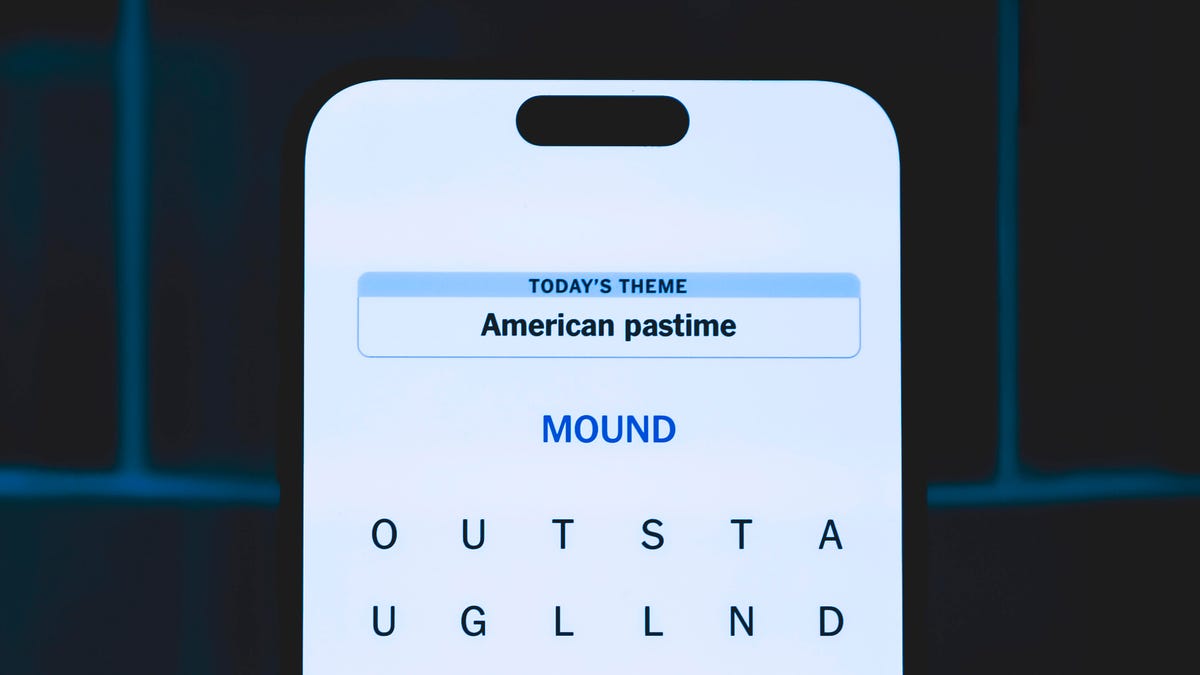
Looking for the most recent Strands answer? Click here for our daily Strands hints, as well as our daily answers and hints for The New York Times Mini Crossword, Wordle, Connections and Connections: Sports Edition puzzles.
Today’s NYT Strands puzzle is a real puzzler. Some of the answers are difficult to unscramble, so if you need hints and answers, read on.
I go into depth about the rules for Strands in this story.
If you’re looking for today’s Wordle, Connections and Mini Crossword answers, you can visit CNET’s NYT puzzle hints page.
Read more: NYT Connections Turns 1: These Are the 5 Toughest Puzzles So Far
Hint for today’s Strands puzzle
Today’s Strands theme is: What a piece of work!
If that doesn’t help you, here’s a clue: You can build it in a shop.
Clue words to unlock in-game hints
Your goal is to find hidden words that fit the puzzle’s theme. If you’re stuck, find any words you can. Every time you find three words of four letters or more, Strands will reveal one of the theme words. These are the words I used to get those hints but any words of four or more letters that you find will work:
- CREW, REAM, LANE, WHEE, DELL, CANE, PULL, REVEL
Answers for today’s Strands puzzle
These are the answers that tie into the theme. The goal of the puzzle is to find them all, including the spangram, a theme word that reaches from one side of the puzzle to the other. When you have all of them (I originally thought there were always eight but learned that the number can vary), every letter on the board will be used. Here are the nonspangram answers:
- WHEEL, AXLE, LEVER, WEDGE, PLANE, PULLEY, SCREW
Today’s Strands spangram
Today’s Strands spangram is SIMPLEMACHINE. To find it, start with the S that’s three letters to the right on the top row, and wind over and down.
Technologies
Today’s NYT Connections Hints, Answers and Help for Nov. 29, #902
Here are some hints and the answers for the NYT Connections puzzle for Nov. 29, #902.
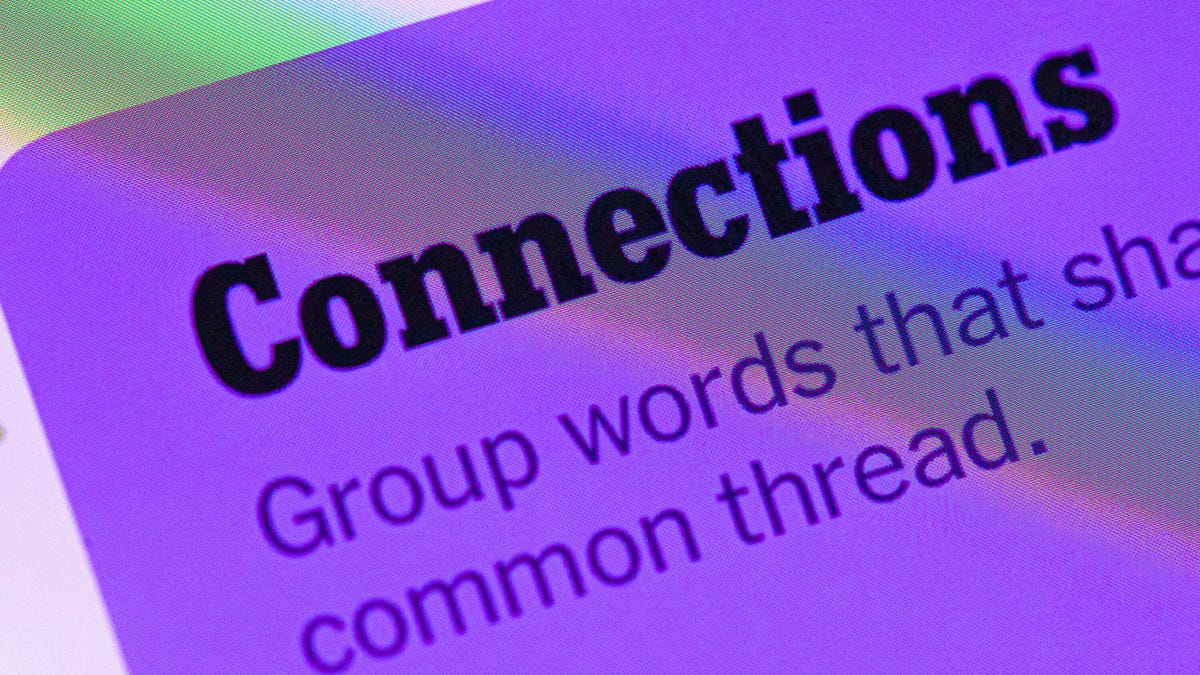
Looking for the most recent Connections answers? Click here for today’s Connections hints, as well as our daily answers and hints for The New York Times Mini Crossword, Wordle, Connections: Sports Edition and Strands puzzles.
Today’s NYT Connections puzzle is tough. If you need help sorting them into groups, you’re in the right place. Read on for clues and today’s Connections answers.
The Times now has a Connections Bot, like the one for Wordle. Go there after you play to receive a numeric score and to have the program analyze your answers. Players who are registered with the Times Games section can now nerd out by following their progress, including the number of puzzles completed, win rate, number of times they nabbed a perfect score and their win streak.
Read more: Hints, Tips and Strategies to Help You Win at NYT Connections Every Time
Hints for today’s Connections groups
Here are four hints for the groupings in today’s Connections puzzle, ranked from the easiest yellow group to the tough (and sometimes bizarre) purple group.
Yellow group hint: Middle of the body.
Green group hint: Fill-in.
Blue group hint: Nice place to hang out.
Purple group hint: Card game.
Answers for today’s Connections groups
Yellow group: Abdominal area.
Green group: Replacement.
Blue group: Park staples.
Purple group: Blackjack terms.
Read more: Wordle Cheat Sheet: Here Are the Most Popular Letters Used in English Words
What are today’s Connections answers?
The yellow words in today’s Connections
The theme is abdominal area. The four answers are core, midsection, torso and trunk.
The green words in today’s Connections
The theme is replacement. The four answers are backup, cover, relief and substitute.
The blue words in today’s Connections
The theme is park staples. The four answers are bench, pigeon, statue and tree.
The purple words in today’s Connections
The theme is blackjack terms. The four answers are bust, hit, split and stand.
-

 Technologies3 года ago
Technologies3 года agoTech Companies Need to Be Held Accountable for Security, Experts Say
-

 Technologies3 года ago
Technologies3 года agoBest Handheld Game Console in 2023
-

 Technologies3 года ago
Technologies3 года agoTighten Up Your VR Game With the Best Head Straps for Quest 2
-

 Technologies4 года ago
Technologies4 года agoBlack Friday 2021: The best deals on TVs, headphones, kitchenware, and more
-

 Technologies4 года ago
Technologies4 года agoVerum, Wickr and Threema: next generation secured messengers
-

 Technologies4 года ago
Technologies4 года agoGoogle to require vaccinations as Silicon Valley rethinks return-to-office policies
-

 Technologies4 года ago
Technologies4 года agoOlivia Harlan Dekker for Verum Messenger
-

 Technologies4 года ago
Technologies4 года agoiPhone 13 event: How to watch Apple’s big announcement tomorrow

